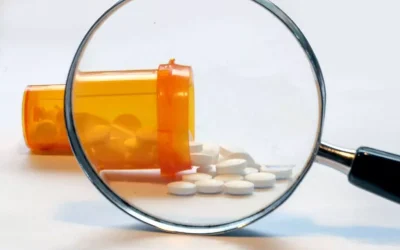Alcoholic Cardiomyopathy: Causes, Symptoms, and Diagnosis
Content
Although only examined in the 18% ethanol group, ATP production was significantly decreased (5.18 ± 0.54 pg/ml) compared to the control group (7.40 ± 0.64 pg/ml) (33). Alcoholic https://ecosoberhouse.com/ cardiomyopathy (ACM) is a cardiac disease caused by chronic alcohol consumption. It is characterized by ventricular dilation and impairment in cardiac function.
However, you should talk to your healthcare provider about symptoms that mean you should call their office because each case is different. You should also follow your doctor’s guidance and advice on any treatments you receive. This includes taking your medication as instructed and eating a healthy diet. If you have any questions about how to do either of these, your healthcare provider can answer them and offer you help and resources along the way. The only way to completely prevent alcohol-induced cardiomyopathy is not to drink alcohol at all.
How dangerous is alcoholic cardiomyopathy?
According to recent data, a genetic form of DCM could be present in up to 50% of idiopathic DCM cases, and other specific forms of DCM such as peripartum cardiomyopathy have been shown to have a genetic basis in a significant number of cases[68]. It is therefore possible that patients with ACM could also harbour a genetic substrate that predisposes them to this form of cardiomyopathy. The first study, alcoholic cardiomyopathy is especially dangerous because which specifically focused on the amount of alcohol necessary to cause ACM, was conducted by Koide et al[20] in 1975. The authors examined the prevalence of cardiomegaly by means of chest x-rays and related it to alcohol consumption among a consecutive series of Japanese males of working age. They found that 2 of the 6 individuals (33%) whose alcohol consumption exceeded 125 mL/d had cardiomegaly.
In the 16th century Paracelsus Theophrastus Bombastus from Hohenheim used this term for distilled liquor and called it alcohol [15]. G., in medieval times, when people took advantage of the vasodilating properties of alcohol to treat angina pectoris or heart failure. So Hildegard von Bingen (1098–1179), one of the most prominent mysticians of her time, recommended her heart wine as a universal remedy. One liter of wine was cooked for 4 min with 10 fresh parsley stems, 1 spoon of vinegar, and 300 g honey and then filtered [11]. Individuals living with alcoholic cardiomyopathy face an unpredictable long-term outlook.
Who Does Alcohol-Induced Cardiomyopathy Impact?
Chest radiographs usually show evidence of cardiac enlargement, pulmonary congestion, and pleural effusions. Richardson et al showed an elevation of creatine kinase, LDH, malic dehydrogenase, and alpha-hydroxybutyric dehydrogenase levels in endomyocardial biopsy specimens taken from 38 patients with DC. Despite these features, the structural changes do not seem to be specific, furthermore, they are not qualitatively different from those found in idiopathic DCM and they do not allow us to differentiate between the two conditions[44]. It also appears that the changes emerging in ACM patients only differ from idiopathic DCM in quantitative terms, with histological changes being more striking in idiopathic DCM than in ACM[44]. Many changes can be observed including premature atrial or ventricular contractions, supraventricular tachycardias, atrioventricular blocks, bundle branch blocks, QT prolongation, non-specific ST and T wave changes and abnormal Q waves.
These breathing problems can often cause sleep problems, including insomnia. Poor circulation from an underactive heart can result in fluid accumulation in the lungs, known as pulmonary edema. With this condition, breathing can be very difficult, progressing to life-threatening levels.
Patterns of Drinking: Binge Drinking
Pharmacologic therapy should include goal-directed heart failure therapy as used in idiopathic dilated cardiomyopathy with reduced ejection fraction. This includes a combination of beta-blockers, an angiotensin-converting enzyme inhibitor, diuretics, aldosterone receptor antagonist and angiotensin blocker-neprilysin inhibitor (if LVEF is less than or equal to 40%). The use of carvedilol, trimetazidine with other conventional heart failure drugs have been proven to be beneficial in some studies. Most common age population for ACM is males from age with significant history of alcohol use for more than 10 years.

If the individual continues drinking, treatment for ACM will be negated and further damage will occur. Exercise stress tests or functional assessments may be conducted to assess how your heart reacts during periods of physical exertion and stress. Overall weakness and tiredness are common, even with minimal physical exertion. The level of fatigue will increase with physical activity, but oftentimes, it doesn’t require much effort to feel significantly tired.
Mitochondrial Bioenergetics/Stress
In advanced cases of heart failure, devices like implantable cardioverter defibrillators (ICDs) or cardiac resynchronization therapy devices may be implanted to regulate heart rhythms and improve cardiac performance. On occasion and in exceptional cases, cardiac muscle biopsies may be undertaken in order to directly examine a small tissue sample from the heart for signs of cardiomyopathy. Under certain conditions, cardiac catheterization procedures may be performed to assess blood flow and pressures. Blood tests can assess markers of heart damage, look for nutritional deficiencies, evaluate liver function, and rule out other potential sources of cardiovascular illness.
Bir yanıt yazın